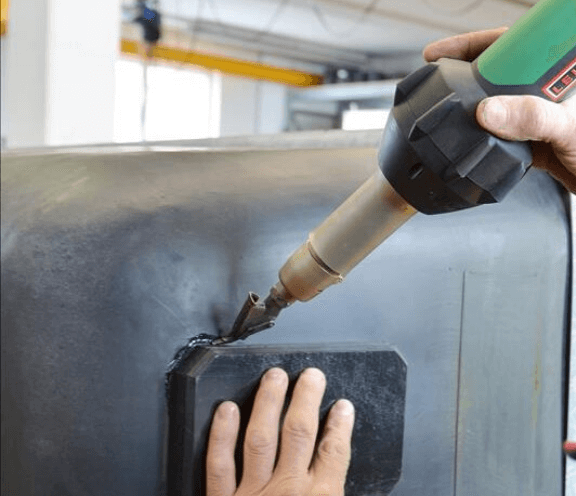What is PVC Fabric Welding and How Does it Work?

PVC welding, specifically PVC fabric welding, is a technique that uses heat or RF fields to create welds of various shapes and patterns. PVC is an acronym for polyvinyl chloride, which is a type of vinyl. PVC has been used extensively in many industries for lots of implementations. It is widely used today because of its durability and cost-effectiveness.
How does PVC Fabric Welding Work?
In situations where heat sealing is used to bind materials together, there are two main methods of heat sealing that apply to both home sealing and the more industrial manufacturing used by companies like Vinyl Technology: impulse and constant heat.
Impulse sealing machines only heat up for the exact amount of time it takes to make the bond and then rapidly cool. This method uses less power than other methods and is best used for thinner fabrics that also tend to have a lower melting point. Impulse heat sealing is the kind you probably use at home.
Constant, or direct heat sealing is just what it sounds like. It typically uses two opposing elements, like metal bars, that are constantly supplied with power. This means that they’re also constantly hot, in order to maintain the higher average temperature required to make the required bonds. This method is the preferred heat seal for thick fabrics like mylar, because of the high heat it uses.
For PVC fabric welding using RF, radiofrequency energy is applied through electrodes custom-built to the required shape. This custom-created mold makes RF sealing the most versatile of the polymer film sealing methods because so many shapes can be created. RF sealing uses a precise combination of time, pressure, and RF waves to form a stronger, more uniform weld than is possible using other methods.
PVC has the advantage of being lightweight and durable. PVC is considered to be an excellent material for radio-frequency welding because of its strong dipolar moment and other chemical properties.
Why is PVC Fabric Welding Better Than Traditional Sewing?
Unlike traditional sewing, PVC fabric welding prevents mechanical fasteners or physical stitches from causing damage to the material. In addition to this, PVC fabric welding can be used to bond materials that are impossible to join using chemical adhesives. Even in its strongest forms, physical stitching involves a thread of some kind in order to create the bond. This physical connection does not normally have the same waterproof and airtight properties as PVC Welding.
How Strong is PVC Fabric Welding?
A weld made through PVC fabric welding is one of the strongest bonds possible with our current technology–it unites both materials on the molecular level, creating a weld that is waterproof, airtight, and resistant to tearing. The weld is also flexible, making it ideal for many applications.
What Temperature does PVC Weld At?
PVC fabric welding typically occurs around the 275-degree Celsius or 527-degree Fahrenheit mark, but it can vary depending on the thickness and type of PVC being used. Thicker fabrics often require higher temperatures or longer periods of exposure to the sealing element.
Can you Extrusion Weld PVC?
Extrusion welding (also known as Injection Welding) is a variety of heat sealing in which a welding rod is preheated and applied to plastic pellets that act as a welding medium. This welding rod is then pushed against the molten plastic into or along a seam to create the bond. These methods are usually used on larger heavier gauge materials where the strongest possible weld is necessary for large tanks or high-capacity bladders.
What’s the Best Way to Weld Plastic?
The best way to weld plastic is whichever method fits your intended result. A strong, effective bond with waterproof and airtight features is the standard result of any kind of PVC fabric welding process, provided it’s done correctly by trained professionals. This type of bond can be created with either heat or RF-based methods.
Are There Plastics That Can’t Be Welded?
There are two kinds of plastics: thermoplastics and thermosets. A thermoplastic is the type of plastic used by companies like Vinyl Technology. That’s not a typo–thermoplastics are “plastic” plastics, which means they can be re-molded after initially being created. A thermoset plastic is impossible to reset or melt, making them impossible to weld.
If you have a project involving PVC fabric welding, or any other PVC-related needs you think would be a good fit for us, get in touch today.
Learn More About PVC Sealing
